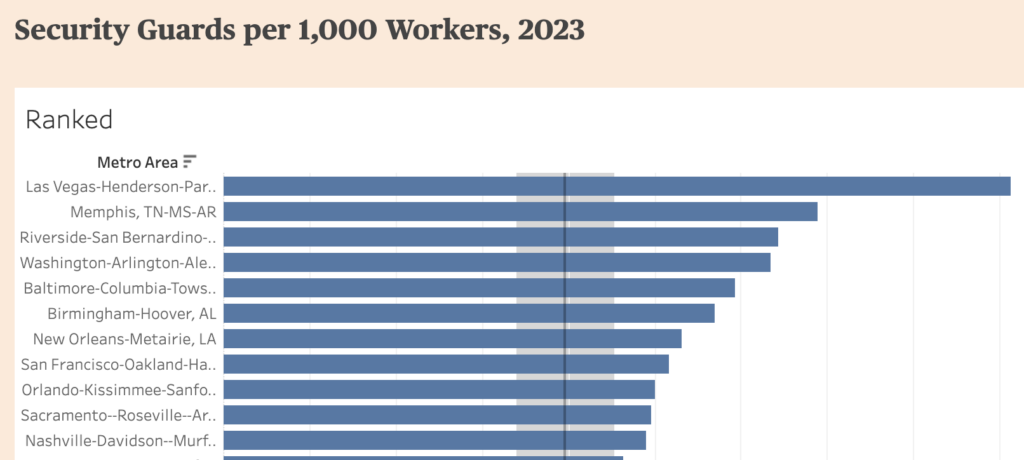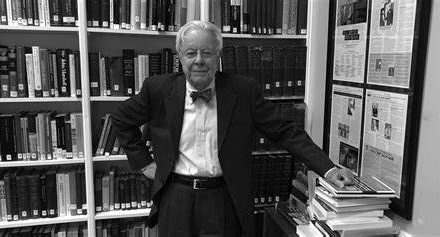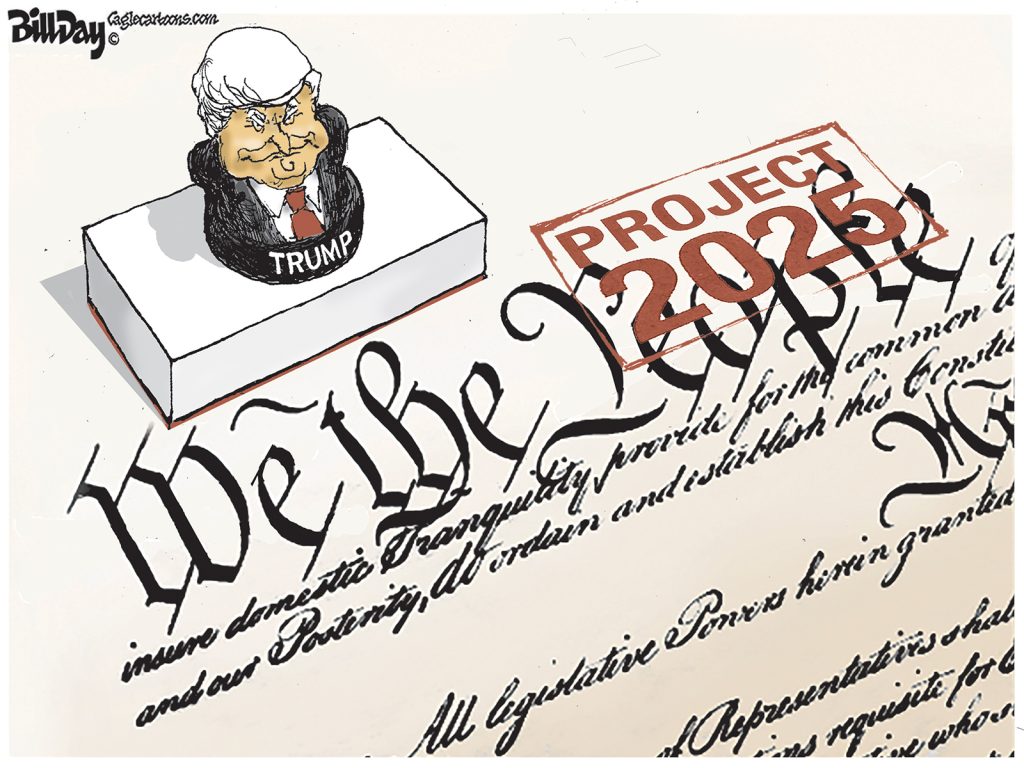From City Observatory:
Note: In the ranking for number of security guards per 1,000 workers, Memphis is #2 at 13.79 and 8,620 security guards.
The number of security guards is a good measure of a city’s level of “anti-social” capital
We thought we’d take an updated look at one of our favorite indicators of “social-capital”–the number of private security guards as a share of the local workforce. Having lots of security guards is likely an indicator of distrust and disorder; organizations hire more security guards when they’re worried about crime, theft or property damage.
We haven’t looked at this indicator since before the Covid pandemic, and wanted to see if much had changed. In the aggregate, according to the Bureau of Labor Statistics, the number of security guards (occupational code 33-9032) has increased by more than 100,000 since 2013, from 1,066,730 to 1,202,940, but that increase is roughly in line with total employment growth over the past decade.
Which cities have the most security guards per capita?
Just as the U.S. has a higher fraction of security guards than other nations, some cities have more security guards than others. To understand these patterns, we’ve compiled Bureau of Labor Statistics data from the Occupational Employment Survey on private security guards. BLS defines security guards as persons who guard, patrol, or monitor premises to prevent theft, violence, or infractions of rules, and whom may operate x-ray and metal detector equipment. (The definition excludes TSA airport security workers).
This occupational data reports the number of security guards in every large metropolitan area in the country. Adjusting these counts by the size of the workforce in each metro area tells us which places have proportionately the most security guards–which are arguably the least trusting–and which places have the fewest security guards, which may tend to indicate higher levels of social trust. We rank metropolitan areas by the BLS estimates of the number of security guards per 1,000 workers. For particularly large metro areas, we report BLS estimates for the largest metropolitan division in a metro area.)
Security Guards per 1,000 Workers, 2023
To see rankings of all cities, go to City Observatory post. It is about half way in the article: https://cityobservatory.org/city_anti_social/?utm_source=substack&utm_medium=email
At the top of the list is Las Vegas. While the typical large metro area has about 8 security guards per 1,000 workers, Las Vegas has 18 per 1,000. Memphis ranks second, with not quite twice as many (14 per 1000) as the average large metro. Other cities with high ratios of security guards to population are New Orleans, Miami and Baltimore. Washington D.C., with its high concentration of government offices, defense and intelligence agencies, and federal contractors, also has a high proportion of security guards.
At the other end of the spectrum are a number of cities in which the ratio of security guards to workforce is one-third lower than in the typical metro area. At the bottom of the list are Grand Rapids, Minneapolis-St. Paul, Providence and Portland, all with fewer than six security guards per 1,000 workers. (The Twin Cities and Portland also do well on most of Putnam’s measures of social capital)
Security Guards as Anti-Social Capital
In his book Bowling Alone, Robert Putnam popularized the term “social capital.” Putnam also developed a clever series of statistics for measuring social capital. He looked at survey data about interpersonal trust (can most people be trusted?) as well as behavioral data (do people regularly visit neighbors, attend public meetings, belong to civic organizations?). Putnam’s measures try to capture the extent to which social interaction is underpinned by widely shared norms of openness and reciprocity.
It seems logical to assume that there are some characteristics of place which signify the absence of social capital. One of these is the amount of effort that people spend to protect their lives and property. In a trusting utopia, we might give little thought to locking our doors or thinking about a “safe” route to travel. In a more troubled community, we have to devote more of our time, energy, and work to looking over our shoulders and protecting what we have.
The presence of security guards in a place is arguably a good indicator of this “negative social capital.” Guards are needed because a place otherwise lacks the norms of reciprocity that are needed to assure good order and behavior. The steady increase in the number of security guards and the number of places (apartments, dormitories, public buildings) to which access is secured by guards indicates the absence of trust.
The number of security guards in the United States has increased from about 600,000 in 1980 to more than 1,000,000 in 2000 (Strom et al., 2010). These figures represent a steep increase from earlier years. In 1960, there were only about 250,000 guards, watchmen and doormen, according to the Census (which used a different occupational classification scheme than is used today). The Bureau of Labor Statistics reports that the number of US security guards has increased by almost 100,000 since 2010, to a total of more than 1.1 million. As a measure of how paranoid and unwelcoming we are as a nation, security guards outnumber receptionists by more than 100,000 workers nationally.
Sam Bowles and Arjun Jayadev argue that we have become “one nation under guard” and say that the growth of guard labor is symptomatic of growing inequality. The U.S. has the dubious distinction of employing a larger share of its workers as guards than other industrialized nations and there seems to be a correlation between national income inequality and guard labor.
It seems somewhat paradoxical, but the salaries paid to security guards get treated as a net contribution to gross domestic product. Yet, in many important senses, security guards don’t add to the overall value of goods and services so much as they serve to keep the ownership of those goods and services from being rearranged. As Nobel prize winning economist Douglass North has argued, we ought to view the cost of enforcing property rights as a “transaction cost.” In that sense, cities that require lots of guards to assure that property isn’t stolen or damaged and that residents, workers, or customers aren’t victimized, actually have higher costs of living and doing business than other places. These limits on easy interaction may stifle some of the key advantages to being in cities.
**
**
Join me at the Smart City Memphis Facebook page and on Instagram where these blog posts are published along with occasional articles, reports, and commentaries that are relevant to Memphis.





I wonder how Guards per 1000 jobs correlates with Police Officers per 1000 Jobs. For instance, if Memphis had a full complement of police officers would we need fewer security guards?
Interesting question, Steve. I’m not sure about correlation but Memphis is #26 in the number of officers per 10,000 population so it seems you might be on to something.